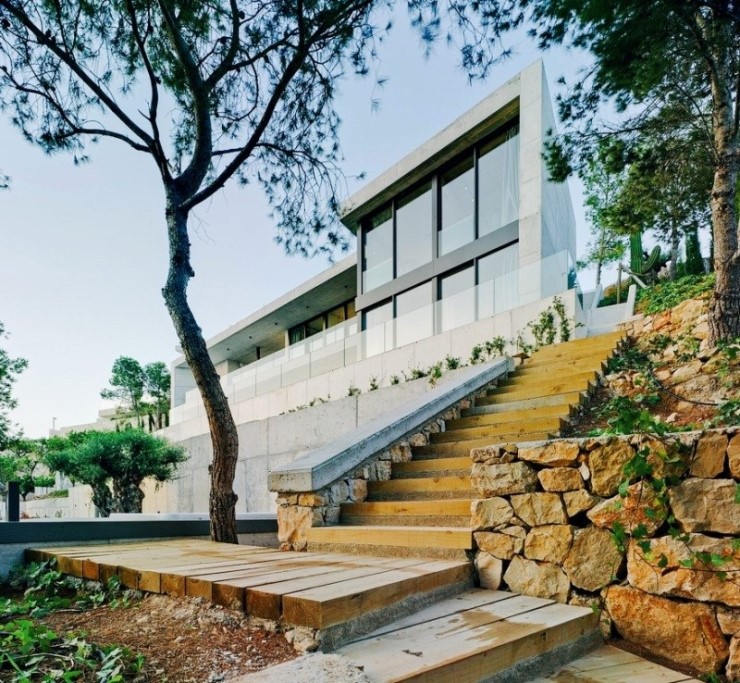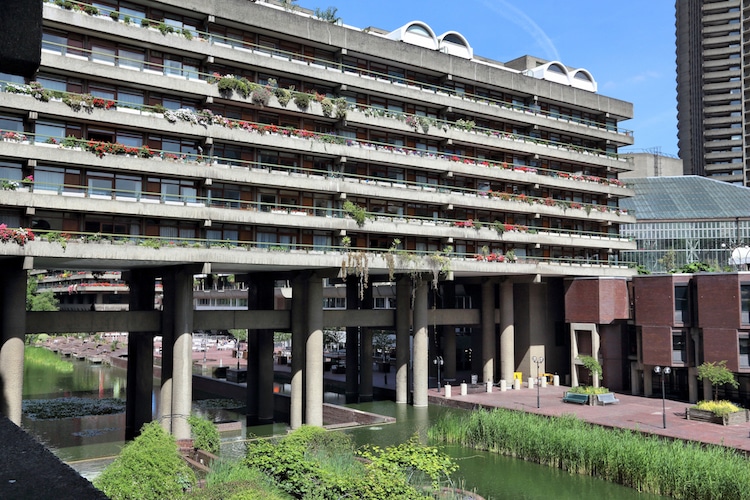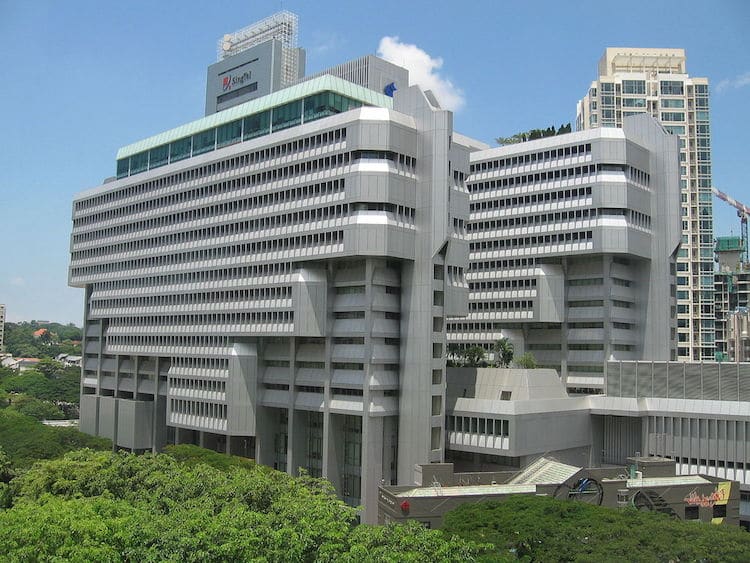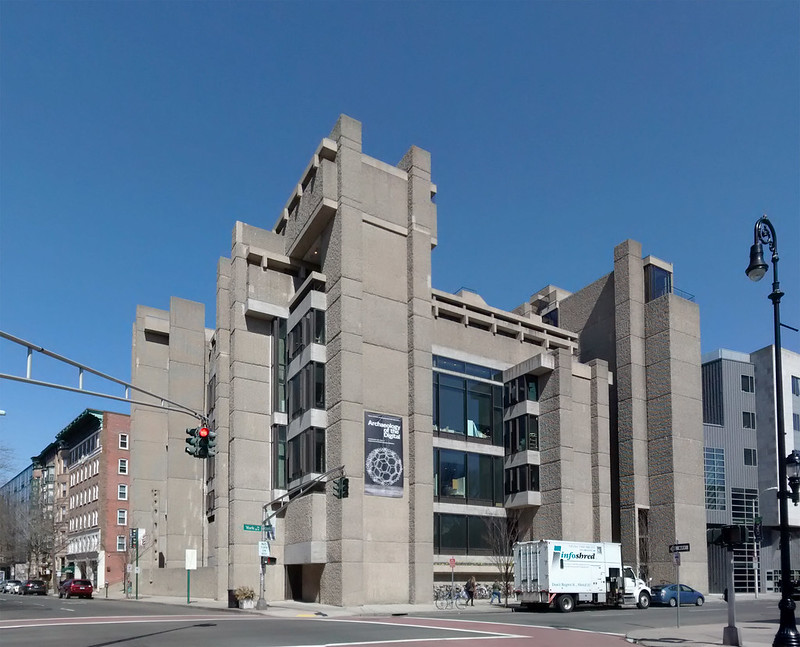브루탈리즘: 그것이 무엇이고 왜 그것은 다시 돌아오고 있는가? Brutalism: What Is It and Why Is It Making a Comeback?
Brutalism: What Is It and Why Is It Making a Comeback?
By Jessica Stewart on December 4, 2018
This post may contain affiliate links. If you make a purchase, My Modern Met may earn an affiliate commission. Please read our disclosure for more info.
Torre Velasca by BBPR. 1958, Milan, Italy. (Photo: Claudio Divizia via Shutterstock)
브루탈리즘: 그것이 무엇이고 왜 그것은 다시 돌아오고 있는가? 그들은 유행이 순환적이고 오래된 것은 결국 다시 새로운 것이 된다고 말한다. 이것은 패션, 음악, 미술에 적용된다. 건축의 경우, 이 원칙을 가장 잘 보여주는 건축 스타일은 없다. 브루탈리즘은 20세기 중반부터 1970년대 중반 정점에 이르기 전에 인기를 끌고 붕괴되었다. 기능 강화 콘크리트와 강철, 모듈식 요소 및 실용적 느낌을 사용하는 것으로 알려진 브루탈리즘 건축은 주로 공공기관 건물에 사용되었다. 인상적이고 기하학적인 브루탈리스트의 건물들은 오늘날 그들을 매우 매력적으로 만드는 것 중의 하나인 그래픽적인 품질을 가지고 있다. 브루탈리스트라는 단어는 이 건물의 요새 같은 위상에서 온 것이 아니라 르 코르뷔지에가 사용한 베통 브뤼(béton brut)에서 온 것이다. 베통 브뤼는 가공되지 않은 노출 콘크리트라는 의미다. 학교, 교회, 도서관, 극장, 그리고 사회주택 사업과 연관된 브루탈리즘은 종종 사회주의 이상을 지향한 20세기 도시 이론과 얽혀 있다. 제2차 세계대전 이후 건설의 필요성과 함께, 브루탈리즘은 전 세계를 지배했지만, 특히 영국과 동유럽 공산주의 국가들에서, 때때로 그것은 새로운 국가 사회주의 건축물을 만드는데 사용되었다.
르 코르뷔지에의 콘크레투스 하우스(Concretus House) 베통 브뤼(béton brut)/zzangkhsjp.blog.me *브루탈리즘 [Brutalism] 20세기 후반 건축의 한 경향으로, 1954년 영국의 건축가 피터(1923~ ) 및 알리슨(1928~ ) · 스미드슨 부처(Alison and Peter smithson)가 노포크 지방 한스탄튼 학교 건축에서 보여주기 시작한 비정하고 거친 건축조형의 주장. 제2차대전 후 형식주의화했으며 또한 신절충주의나 신아르누보라고 불려지는 것처럼 조형주의화한 근대건축에 반항, 기능주의 원리로 복귀한다는 의미에서 가공하지 않은 재료 그대로와 설비, 그리고 비형식주의를 특색으로 한다. 우아함을 전통으로 하는 서구건축에 대해서 브루탈(야수적, 잔혹)한 활력을 주조(主調)로 삼고 있으며, 국제적으로 영향을 미쳤다 [네이버 지식백과] 황기철 콘페이퍼 에디터 큐레이터 Ki Cheol Hwang, conpaper editor, curator |
edited by kcontents
They say that trends are circular and what’s old becomes new again. This is true for fashion, music, and art. In the case of architecture, there’s no architectural style that exemplifies this principle better than Brutalism. From the mid-20th century, this style rose in popularity before reaching its peak in the mid-1970s, when it came crashing down as a model of bad taste. But that’s all changing now, with a renewed interest and appreciation for this once derided architectural style.
Known for its use of functional reinforced concrete and steel, modular elements, and utilitarian feel, Brutalist architecture was primarily used for institutional buildings. Imposing and geometric, Brutalist buildings have a graphic quality that is part of what makes them so appealing today. The word Brutalist doesn’t come from the architecture’s fortress-like stature, but from the raw concrete its often made from—béton brut.
Associated with schools, churches, libraries, theaters, and social housing projects, Brutalism is often intertwined with 20th-century urban theory that looked toward socialist ideals. With the need for construction after World War II, Brutalism took hold around the world, but particularly in the UK and Eastern European Communist countries, where it was sometimes used to create a new national socialist architecture.
The Origins of Brutalism
Swiss-French architect Le Corbusier‘s love of concrete translated into a building that many consider the birth of Brutalism. The Unité d’Habitation in Marseilles, France was his first project in 10 years, World War II having interrupted his practice. Completed in 1952 and created as housing for the working class, Le Corbusier’s design called for a giant reinforced concrete framework fit with modular apartments. The mammoth complex, which could house up to 1,600 people, was largely devoid of decorative elements and laid the framework for future Brutalist projects.
The word Brutalism in relation to architecture was first coined by a Swedish architect, Hans Asplund, to describe a square brick home called the Villa Göth in 1949. This was picked up by English architects where the style was further honed by Alison and Peter Smithson. Together they are particularly known for East London’s Robin Hood Gardens council housing complex. Completed in 1972, it was built from precast concrete slabs and though built with the Smithsons’ ideals for ideal living, it never quite lived up to its goals. In 2017 the eastern block was demolished as part of a refurbishment plan. But to show how far Brutalism has come, the Victoria & Albert Museum acquired three stories of the demolished building.

Robin Hood Gardens by Alison and Peter Smithson. 1972, London, England. (Photo: Claudio Divizia via Shutterstock)
The Fall of Brutalism
Heading into the 1980s, Brutalism fell out of favor. Part of this was due to the cold and austere nature of the architecture, which was often associated with totalitarianism. Another mark against Brutalism was that the raw concrete used in construction didn’t age well, often showing signs of water damage and decay that brought down the overall aesthetic.
British author Anthony Daniels, who uses the pen name Theodore Dalrymple, called the reinforced concrete of Brutalism “monstrous,” pointing out that it “does not age gracefully but instead crumbles, stains, and decays.” He blamed Le Corbusier for architects’ love of concrete, stating that a “single one of his buildings, or one inspired by him, could ruin the harmony of an entire townscape.”
Brutalism came to symbolize urban decay and economic hardships that were out in the open for world to see. Raw concrete made the perfect canvas for graffiti artists, whose vandalism only contributed to the decline of these structures. Throughout the 1980s, the style gave way to the High-tech architecture and Deconstructivism that would make way for Post-Modern architecture.
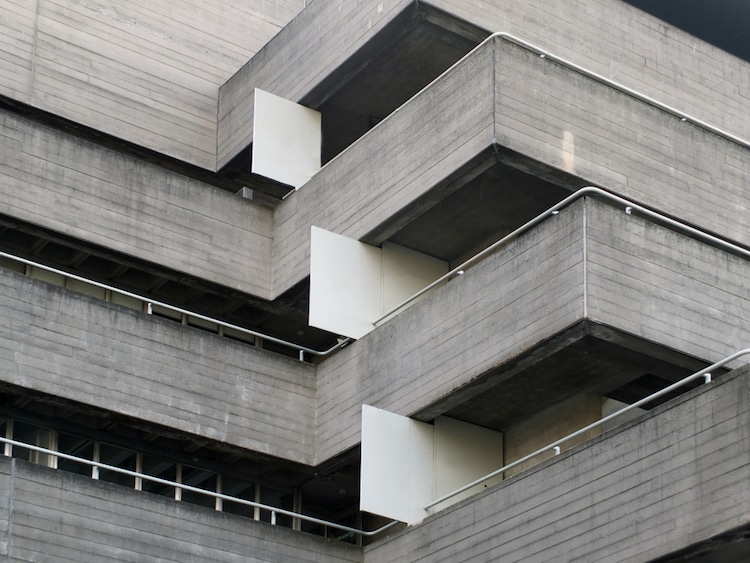
Photo: Philip Openshaw via Shutterstock
New Appreciation for Brutalism
Over the past 5 years, a new appreciation for Brutalism has emerged. Books like SOS Brutalism: A Global Survey, How to Love Brutalism, Soviet Bus Stops, and This Brutal World all celebrate the artistry of the architectural style. Virginia McLeod, the editor of Phaidon’s Atlas of Brutalist Architecture, first noticed a renewed interest in Brutalism on Instagram.
“I noticed more and more interest in brutalist architecture,” she says. “People were excited about it and loved the graphic quality of it.” The hashtag #brutalism has over 500,000 images and conservation groups are increasingly trying to save examples of Brutalism, which are all too often demolished without a second thought.
No one knows exactly why Brutalism has become fashionable once again, but Brad Dunning of GQ has an interesting theory. “Brutalism is the techno music of architecture, stark and menacing. Brutalist buildings are expensive to maintain and difficult to destroy. They can’t be easily remodeled or changed, so they tend to stay the way the architect intended. Maybe the movement has come roaring back into style because permanence is particularly attractive in our chaotic and crumbling world.”
Take a look at some of the world’s finest examples of Brutalist architecture.
GEISEL LIBRARY BY WILLIAM PEREIRA. 1970, SAN DIEGO, CA.
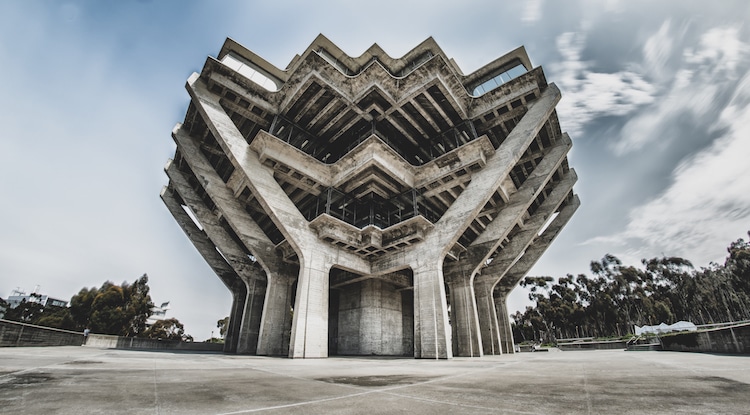
Photo: Ryan Kelehar via Shutterstock
NATIONAL LIBRARY OF THE ARGENTINE REPUBLIC BY CLORINDO TESTA. DESIGNED 1961, BUENOS AIRES.
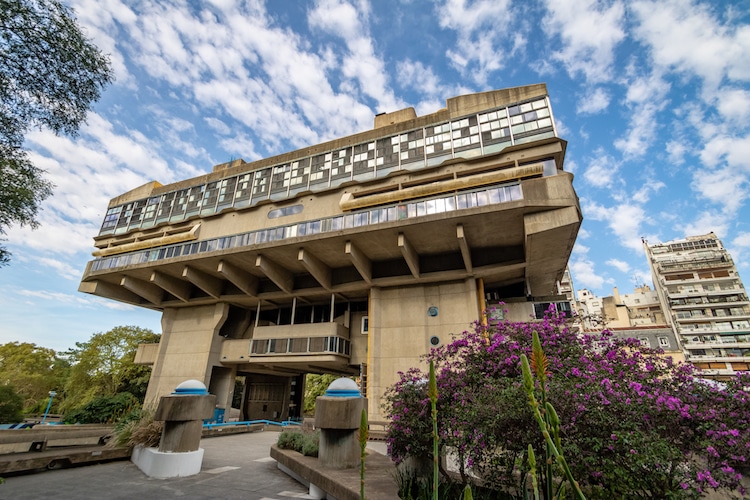
Photo: Diego Grandi via Shutterstock
HABITAT 67 BY MOSHE SAFDIE. 1967, MONTREAL.
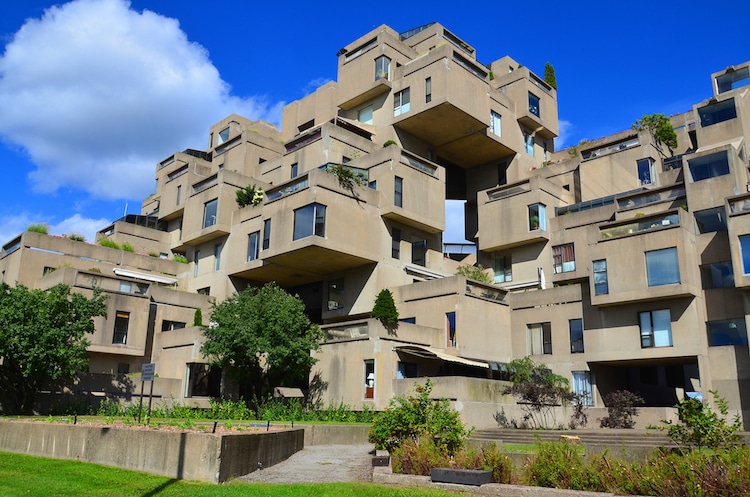
Photo: meunierd via Shutterstock
BOSTON CITY HALL BY KALLMANN MCKINNELL & KNOWLES. 1968, BOSTON, MA.
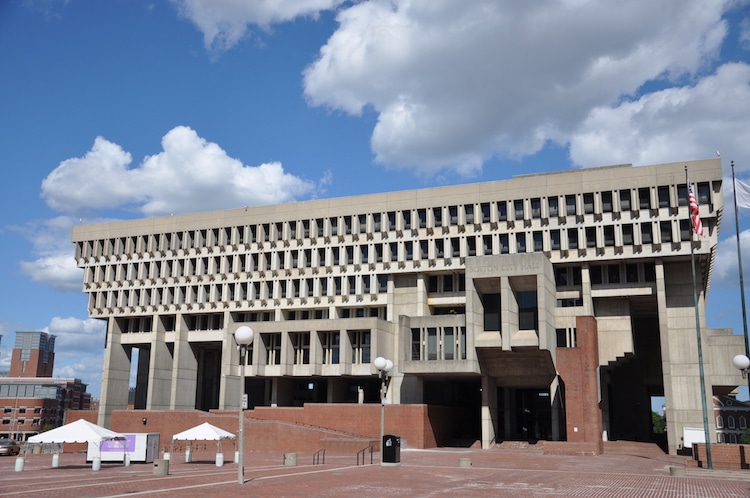
Photo: jiawangkun via Shutterstock
BARBICAN ESTATE BY CHAMBERLIN, POWELL, AND BON. 1968-79, LONDON.
TELECOMMUNICATION CENTRE AND CENTRAL POST OFFICE BY JANKO KONSTANTINOV. 1989, SKOPJE, MACEDONIA.
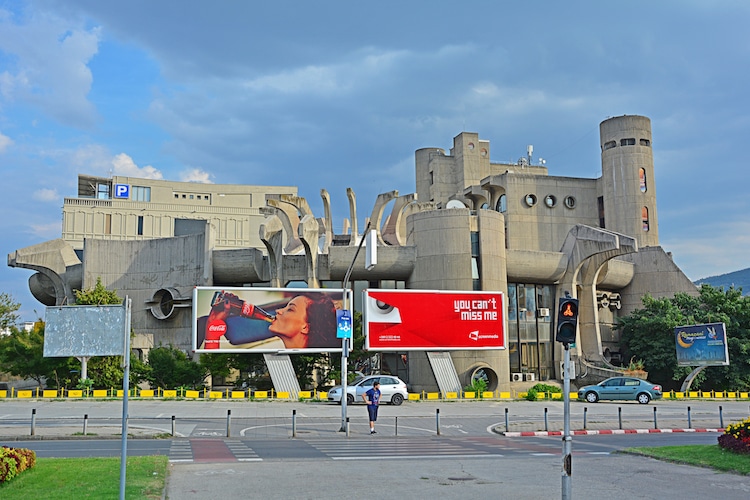
Photo: Martyn Jandula via Shutterstock
ROYAL NATIONAL THEATER BY SIR DENYS LASDUN. 1976, LONDON.

Photo: Ron Ellis via Shutterstock
TRIPLEONE SOMERSET BY GROUP 2 ARCHITECTS. 1971, SINGAPORE.
PIRELLI BUILDING BY MARCEL BREUER & ROBERT F. GATJE. 1969, NEW HAVEN, CT.
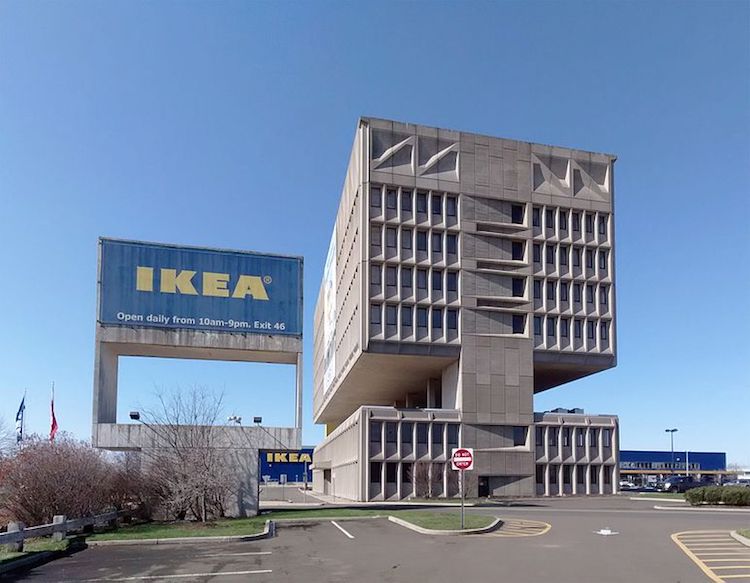
Photo: Gunnar Klack [CC BY-SA 4.0], from Wikimedia Commons
TRELLICK TOWER BY ERNŐ GOLDFINGER. 1972, LONDON.
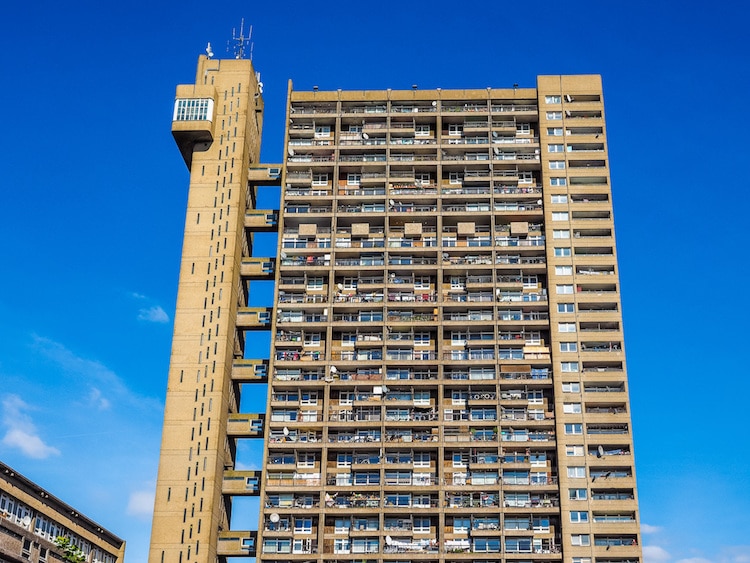
Photo: Claudio Divizia via Shutterstock
RUDOLPH HALL, YALE ART & ARCHITECTURE BUILDING BY PAUL RUDOLPH. 1963, NEW HAVEN, CT.
WESTERN CITY GATE BY MIHAJLO MITROVIĆ. 1979, BELGRADE.









